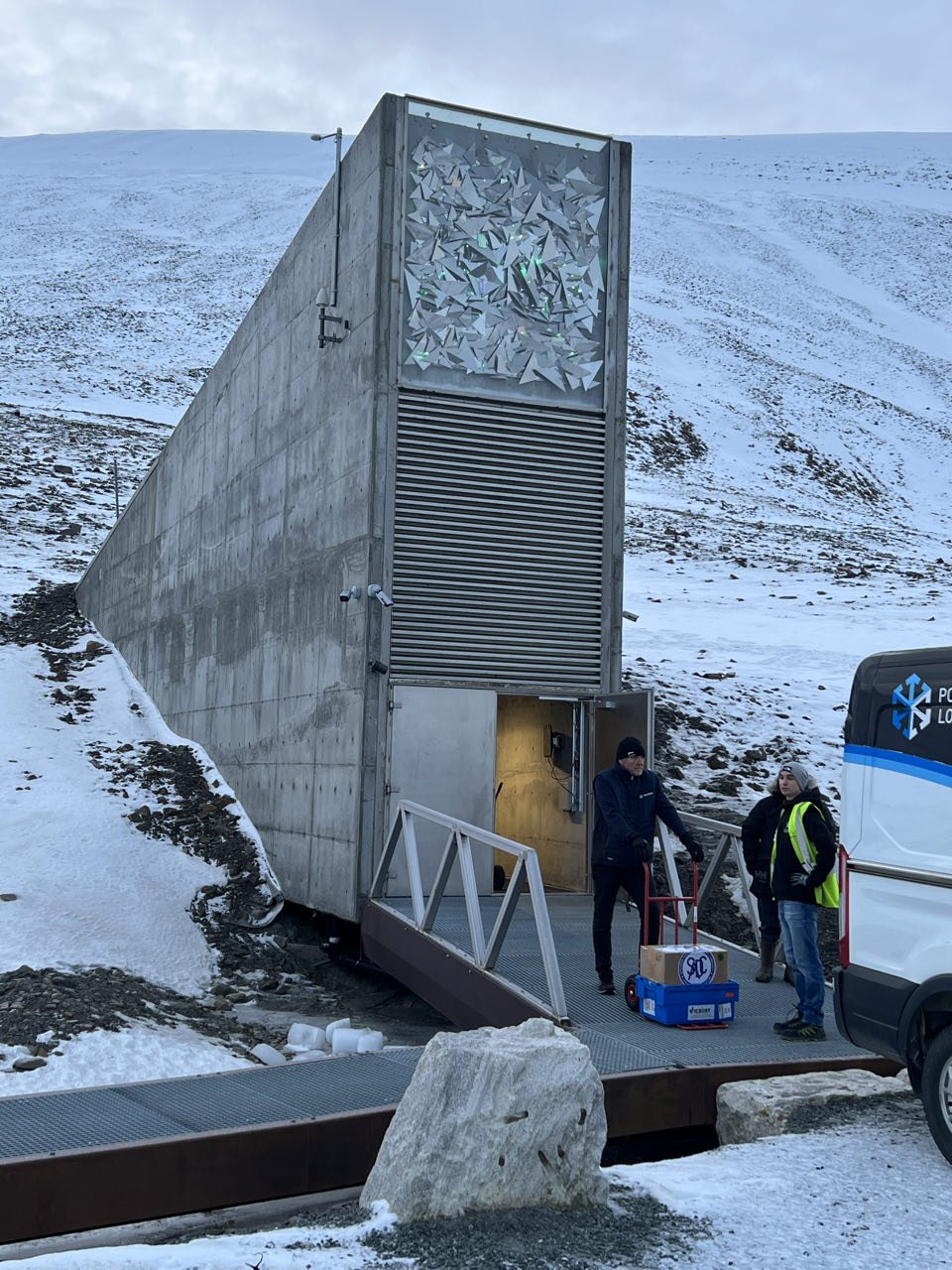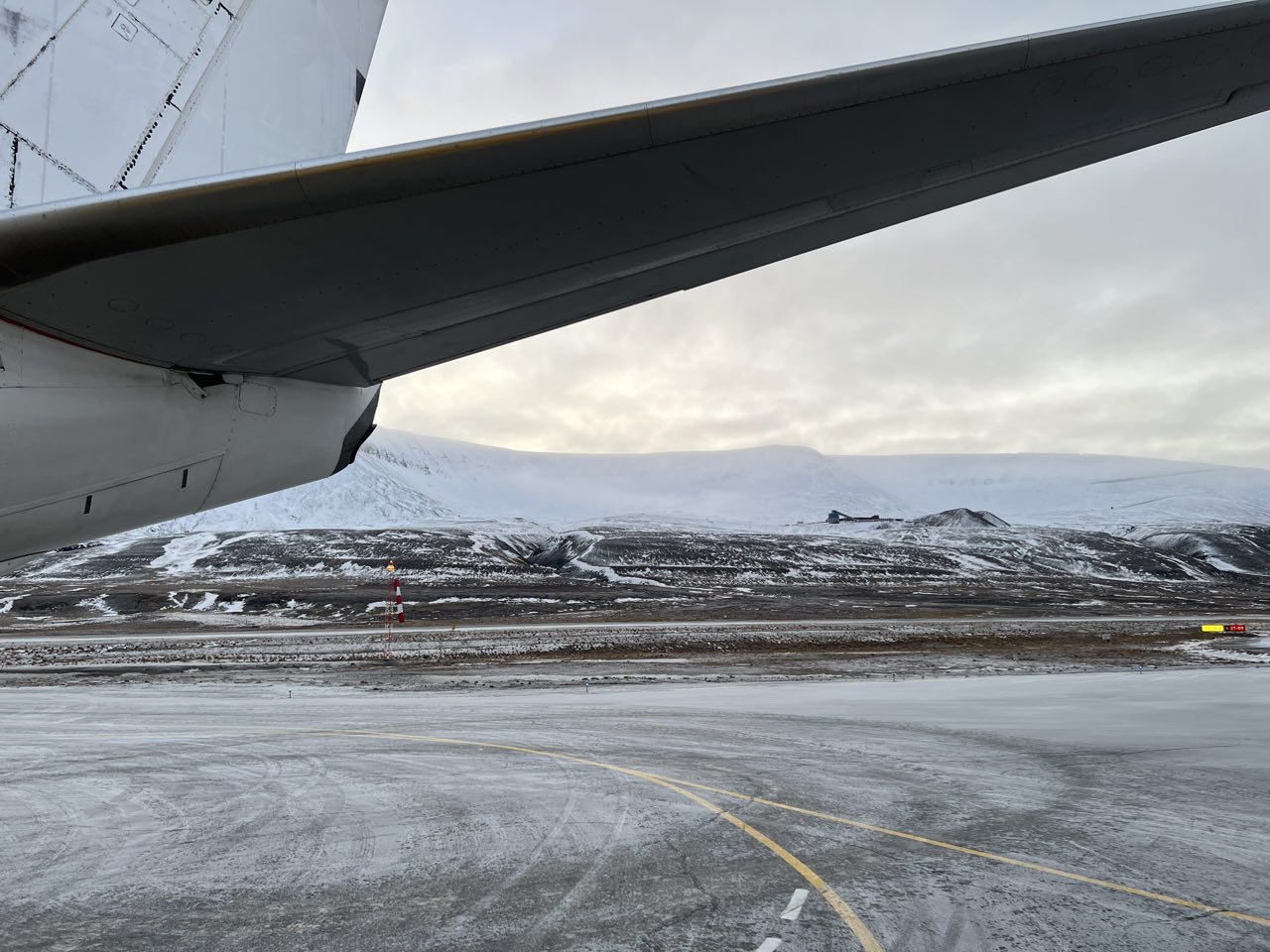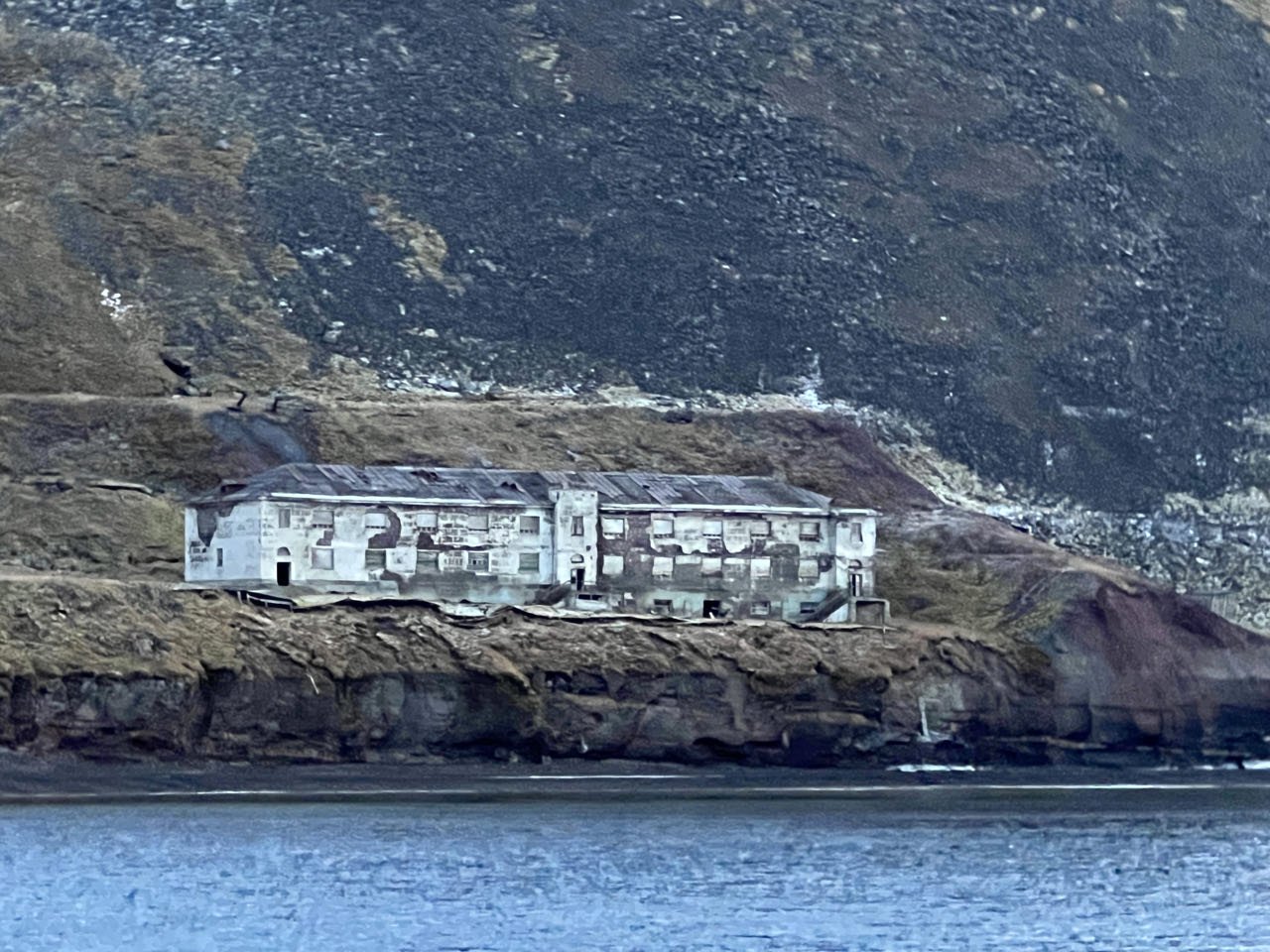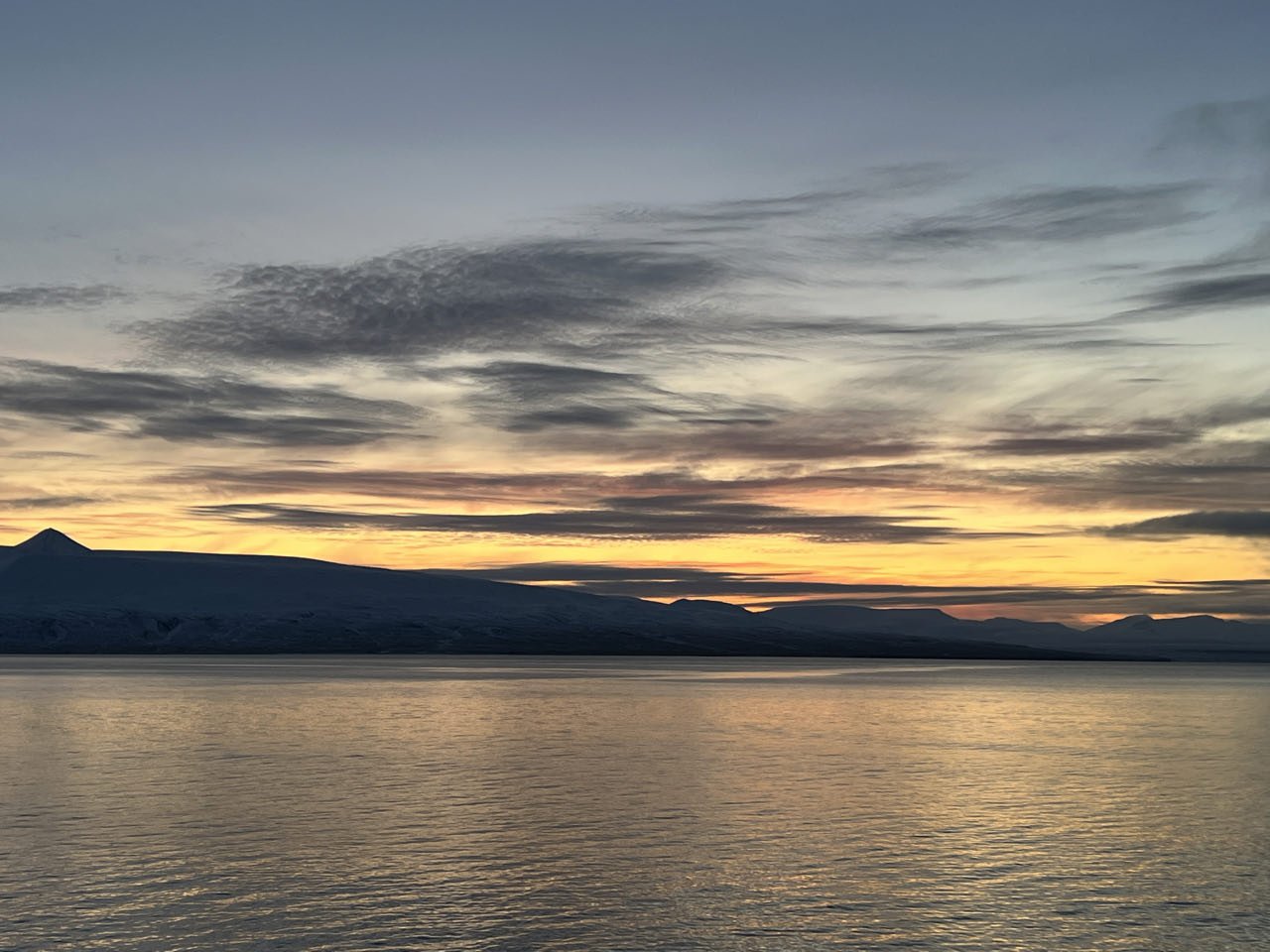Day 633 - Longyearbyen
A Trip to the Global Seed Vault
The Global Seed Vault up close
This wild place we are visiting goes by multiple names and that can be confounding. The archipelago was once named Spitzbergen, but now it's known as Svalbard (apparently a treaty was involved). Only the largest island is called Spitzbergen these days. The largest city on that island is called Longyearbyen, and that is where we and our cold noses stood at the moment. I've shared a video that gives you a glimpse of it all.
Longyearbyen is the home to the Svalbard Global Seed Bank, created as a backup to ensure the human race preserves the world's crop diversity. The idea is to provide long-term storage of duplicate seeds from around the world in case of war, disaster, plague or other forms of armageddon. If rebuilding is necessary, this will provide a lot of what is needed to get us all up and running again.
There's not much to see and no one is allowed in, unless you work there. Nevertheless, here we were and I wanted to see it. Since a rifle was required to hike up to the vault, we took a bus in the interest of not having me shooting everything but a bear. We were lucky to find it open with a fresh supply of seeds from India and Africa coming in. This almost never happens.
A TV team from Spain thought this was big enough deal that it was covering it for the news or a documentary. As we stood standing in the frigid air, I caught a few pictures and videos of thousands of the husks being hauled into the vault's entrance, which is nothing more than a slit of metal that burrows deep into the mountain where the bank sits, far from any disasters that might taint or damage it.
Boating Around Longyearbyen’s Harbor
Back at sea-level we visited the North Pole Expedition Museum, dedicated to all things Svalbard and loaded with fascinating bits of information about famous polar expeditions. I learned for the first time that Roald Amundsen was not only the first human to reach the South Pole but was the first to cross over the North Pole, by dirigible! We felt a slight kinship with him since we had just covered nearly 12,000 miles getting from Antarctica the previous February clear to the opposite end of the planet, all without ever traveling by jet, well, except for this one last leg.
We ended the day boarding a ship that would take us beyond Longyearbyen's harbor and then back. It felt like evening, but it was really mid afternoon. The sun was already low in the sky and descending fast.
As we skated out of the channel, I could only describe the land around us as an awful beauty, barren and forbidding, a place as stunning, and as alien as any on Earth with gargantuan mountains that rose up all around.
With the sun dying, we passed immense buildings that looked like ancient coal plants, tiny against the immense mountains. This was Barentsburg, one of Spitzbergen's remaining Russian coal towns with a population of about 400 Russian and Ukranian workers, though the word now was most of the Ukranians had departed once Russia invaded their nation. From our ship, the buildings looked abandoned, on their last legs, and maybe they were.
Soon the enormous mountains, 1000 to 2000 feet of rock as smooth and hard as anthracite grew dark against the orange and pink of the setting sun, gouged by epochs of ferocious winds, rain and snow.
Sam, our guide, a big, bearded marine biologist from Minnesota who was celebrating his last day on the job told us the hottest air temperature of the year is 50º F in these parts, and so the sea ice is melting rapidly, and that's a problem because one of the things that keep the earth's temperature in a reasonable range is because bright snow and ice reflect sunlight away from the planet. This is known as the albedo effect. As snow and ice melts the planet grows darker and therefore absorbs more of the sun's heat, accelerating the loss of still more ice and snow. Case in point, last summer was the first time there was no ice in the Longyearbyen harbor. "The Arctic," Sam told us, "is the energy system that drives every ocean current in the world." And if goes south (so to speak), it won't be good. Meanwhile he pointed out that with the warming of the north pole, polar bears were struggling. There were about 5000 in the planet's Northernmost regions. About 2500 lived around Franz Joseph Island, the only land farther north than Svalbard, and on Svalbard itself a mere 675 were managing to hang on, for now.
After Sam finished his presentations, I walked to the prow of the ship feeling melancholy. I gazed a long time at the unearthly evening as it descended and found my mind wandering toward the ways the world might be coming apart. Seed vaults as insurance against disaster, the proof around us of climate growing increasingly unhinged, too many people and too much war in Ukraine and the Middle East, along with 39 other murderous conflicts by last count. I thought about it.
It was hard to shake the feeling that we might not survive ourselves, but I still remained optimistic. Surely we would figure out that turning on ourselves and our own, our only, planet was senseless and our disputes tiny. Though it might feel like we were doing worse, all of the indicators were that we are, in fact, far less violent and stupid than we have been in the past.
I looked at what remained of the spectacular sun that had just slipped beyond the lip of the planet's cap and took some solace knowing that the planet had survived far worse than anything we could dish out and would do just fine. The bigger question was, would we?













